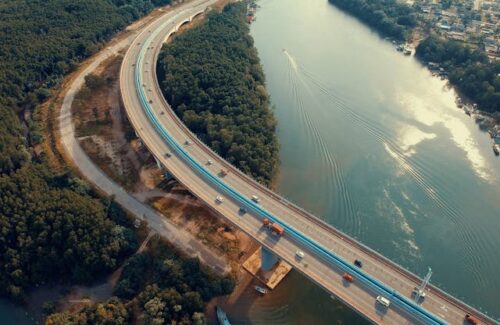
Having a fear of bridges is not uncommon. Many people roll down their windows or send up a prayer as they drive across the structure. But are these fears justified? Any time you operate a motor vehicle there is a risk, but there are certain specific dangers to consider when driving on bridges. Although sometimes scary, bridges are important structures in our society, allowing us to reach more places and drive over obstacles, other roads, and bodies of water. Contact a San Mateo County, California motor vehicle accident lawyer with questions and read on for more information.
Are Bridges More Dangerous than Regular Roads?
The average person drives on normal roads or highways much more often than they drive over bridges, so you would assume that more accidents occur off of bridges than on them. The issue is not with the number of accidents that occur, but the nature of them.
Auto accidents that happen on bridges have been found to be 10 times more dangerous than accidents on a regular road. This is due to the limited and constrained space to maneuver. A driver is not able to swerve onto a large shoulder or patch of grass to avoid a collision like they are when driving on a highway. They are confined to the strict and narrow lanes of the bridge.
What Are the Dangers that Bridges Pose When Driving?
As stated, operating a car or other motor vehicle always comes with a form of risk. Cars weigh several tons and are constructed from steel and other sturdy materials. Driving a machine of that caliber at 60 miles per hour can cause serious damage. Although there is never a 100% chance of avoiding accidents when driving, bridges pose unique dangers that regular roads may not.
- Lack of certain safety features, such as shoulders
- Generally more narrow than regular roads
- Weight limitations, which affect the number of cars that can be on it and could cause a collapse
- Weight limitations, which can affect how many times it can be paved over or repaired
- Ineffective drainage systems
These above dangers can cause various types of accidents. For example:
- Side impact: Because of how narrow bridge roads tend to be there is a chance for a side impact collision, causing serious damage. The car may be crushed and passengers may sustain severe injury or get stuck between the barrier and other cars.
- Pileups: Another issue with the narrowness of the road and the lack of shoulder space is that cars cannot swerve out of the way even if they see an accident coming. They can only brake but if they do not have enough room between cars or do not react in time, it can cause a chain reaction and result in a pileup of cars.
- Forced overboard: Because a bridge is a structure built over something else there is potential that your car may go over the edge in the event of a collision. There are barriers and walls to prevent this from happening, but it is a potential type of accident.
- Collapse: Take comfort in the fact that it is extremely uncommon for a bridge to collapse. However, you cannot rule it out as a potential accident. If there is an extraordinary amount of weight, a natural disaster, or something strikes the bridge, there is potential for collapse.